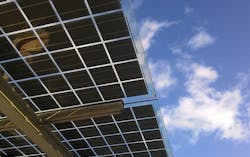The power industry is increasingly exploring questions about compensating distributed energy resources as microgrids, solar, energy storage and other DERs are added to the grid.
Prepared by National Association of Regulatory Utility Commissioners (NARUC), this draft manual is intended to assist jurisdictions in developing policies related to compensating distributed energy resources. It is also intended to be similar to other NARUC manuals on topics such as cost allocation and natural gas rate design.
The manual is important because the growth of distributed energy poses unique challenges to regulators. The traditional ways of electricity delivery, using large power plants and transmission and distribution wires, are increasingly being challenged due to distributed energy.
Distributed energy resources, or DERs, are located on the distribution grid, often on the customer’s premise, and are capable of providing many services to the customer and the grid. DERs can offset the premise’s consumption and deliver excess generation onto the distribution grid. They also can allow demand to respond to system prices and conditions.
DER is not simply supply or demand, as traditionally thought, but can be multiple types of resources, such as storage or advanced technology paired with a resource. These resources offer two-way flow of electricity that requires new approaches to compensation. New ways of allowing the utility to recover its costs may be needed. New assumptions around customer demand will be necessary. Jurisdictions must identify their current status regarding DER and what role they expect DER to have in the future. They also must understand the nature of DER adoption rates and identify necessary policy developments.
NARUC prepared this manual on compensating distributed energy resources as a way to assist jurisdictions in identifying pertinent issues.
